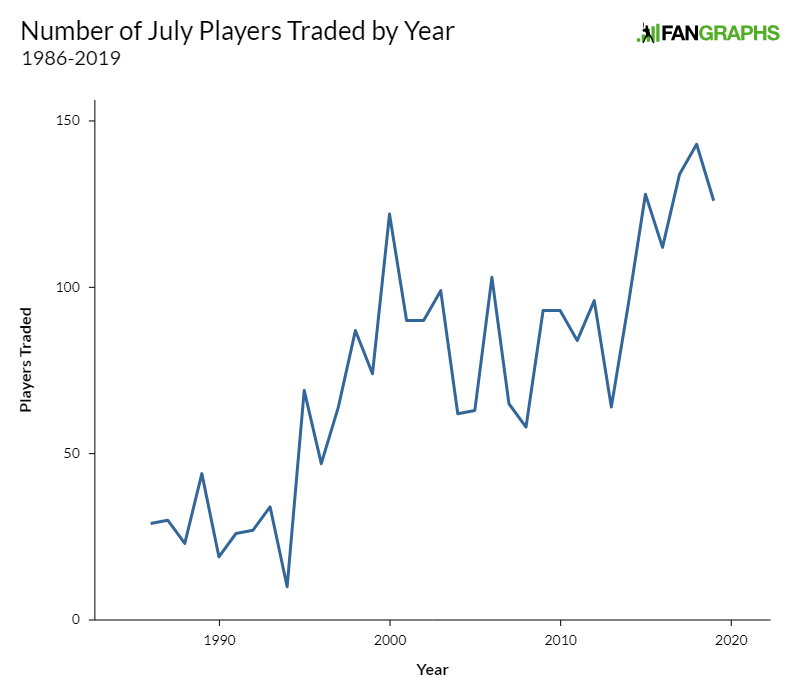The 2019 trade deadline has come and gone, and while it provided a frenzy of late-breaking activity, ultimately it offered far more quantity than quality. With the exception of Trevor Bauer, Zack Greinke, and Marcus Stroman, most of the top starters whose names have been tossed around for the past several weeks — including Matthew Boyd, Madison Bumgarner, Mike Minor, Robbie Ray, Noah Syndergaard, and Zack Wheeler — ended up staying put, and likewise when it came to relievers. What’s more, there weren’t many big bats dealt, and in general, the combination of too many teams that view themselves as contenders and the loss of the August waiver period led to approaches that felt far too risk-averse.
Regarding the volume, first consider the accounting of True Blue LA’s Eric Stephen from a year ago as compared to this year. Last year, there were 18 trades on July 31, and 37 from July 25 onward. This year there were 22 on July 31, and 35 from July 25 onward. In terms of quality, last year there were six position players (Manny Machado, Eduardo Escobar, Tommy Pham, Ian Kinsler, Asdrubal Cabrera, and Mike Moustakas) who had higher WARs at the time they were dealt than this year’s leader, Franmil Reyes (1.4). On the other hand, this year had more pitchers above that baseline (five to four), and where J.A. Happ led last year’s brigade at just 2.0 WAR, Greinke (3.6, not counting his 0.7 as a hitter), Stroman (2.9) and Bauer (2.7) all surpassed that. Finally, by the accounting of colleague Ben Clemens — whose study of deadline activity goes back to 1986 and can be found here — last year, there were 143 players traded in all of July; they had totaled 64.9 WAR in 2017 and were on pace to total 62.1 WAR in 2018. This year, there were 126 such players dealt; they totaled 55.1 WAR in 2018 and were on pace for just 45.6 WAR this year.
What follows here is a breakdown of five of my favorite trades (or in some cases, sets of trades) of July and five of my least favorite trades and non-trades. Admittedly, I’m viewing these with a vague bias towards winning now, and against your favorite team (I kid, I kid). In some cases, I wrote about these deals myself, while for others, I’ll refer you to the fine analysis of my colleagues in order to keep this from becoming a novel.
Favorites
1. Astros acquire RHP Zack Greinke from Diamondbacks for four prospects
To these eyes, the boldest move of the deadline was clearly the best. At a time when so many other top contenders talked themselves out of paying high prices to acquire top talent, the Astros — who already owned the AL’s best record (69-39, .639) — added the 35-year-old Greinke in exchange for righties J.B. Bukauskas and Corbin Martin, first baseman Seth Beer, and infielder/outfielder Josh Rojas. As Dan Szymborski detailed, Greinke’s curve keeps getting better and better, and he’s currently ninth in the majors in pitching WAR (it’s a shame he likely won’t bat much the rest of the way).
While the two pitchers Houston sent to Arizona ranked fourth and third respectively on the Astros’ prospect list as of March, none of the players they dealt rank among our Top 100 prospects, and Martin, who made five appearances for the Astros in May and June, recently underwent Tommy John surgery. That Greinke’s contract runs through 2021, with the Diamondbacks picking up about 31% of the remaining tab, makes this all the better for the Astros, as it protects them against the potential loss of Gerrit Cole in free agency while costing them only about $22.7 million per year on an annualized basis. Read the rest of this entry »

